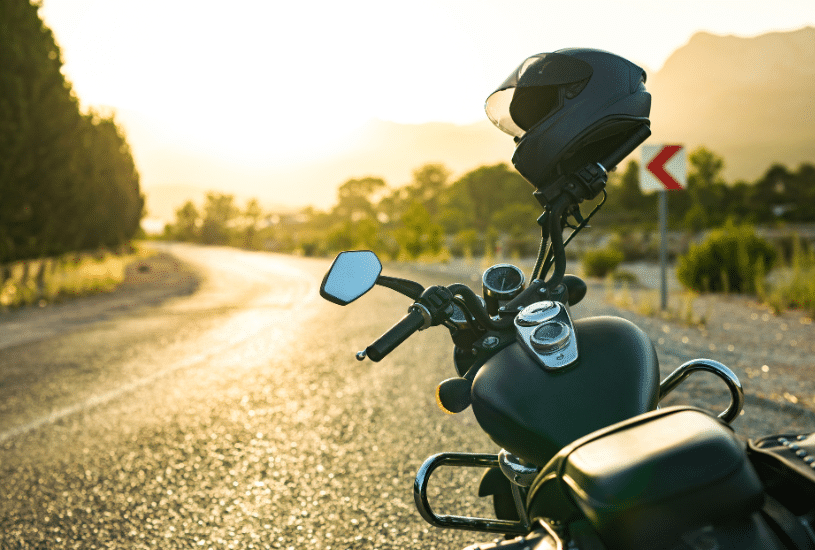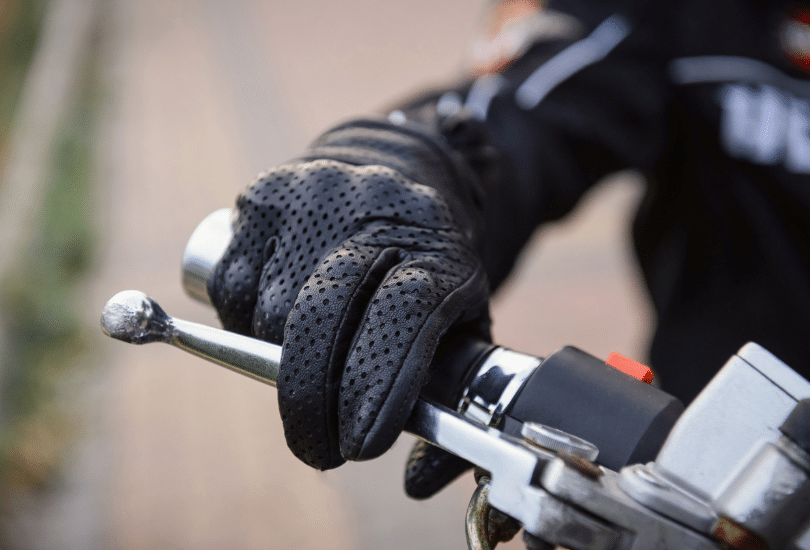Buying a used motorcycle can be exciting, especially if it’s your first bike. However, research is crucial to make sure that you get the safest ride and the best possible value for your money. In this guide, we provide an in-depth bike-buying checklist you can follow to avoid issues later down the road.
Motorcycle Inspection Checklist
When you arrange the appointment with the seller to inspect the motorcycle in person, ask them to leave the bike cold.
A cold engine will make it easier for you to detect issues with the starting system, exhaust, and engine. Remember to take a flashlight, your bill of sale, a trailer, tie-downs, and payment with you.
Visual Inspection
Upon arrival, inspect the bike to gauge its overall condition and check for signs of damage and leaks. Broken fairing tabs are frequently accident damage that is easy to notice. Usually, it is simple to determine if the owner has just done a cursory cleaning of a neglected bike or if they took proper routine care of the motorcycle throughout their ownership.
Frame
The frame’s condition can provide some insights into a motorcycle’s history. Run your hands over the frame’s surface to check for paint damage, dents, and cracks.
Next, hold the front brake lever and rock the bike back and forth. A clicking sound might indicate worn or loose steering head bearings. Bent steering stops on the frame’s neck can be a sign of crash damage.
Wheels and Tires
A bit of wear or cupping on the tires is normal and shouldn’t discourage you from buying. However, extensive wear on the rear tire’s center third might indicate that someone used the bike to perform burn-outs, which can damage the engine. Place the bike on a center stand and spin both the back and front wheel to check for bends.
Exhaust
Inspect the exhaust to ensure that the mounts hold the pipes and silencer firmly in place. Feel the back and underside of the exhaust for signs of corrosion, exhaust leaks, or other damage. If the exhaust has dents, it can result in poor performance.
Clutch and Brakes
Sit on the motorcycle and put it in first gear. The clutch lever should engage and release effortlessly. When engaging the clutch, the bike should roll smoothly.
Next, take the bike out of gear, roll it forward, and apply the brake levers gently. Pay attention to the brakes’ responsiveness and any noise from the brake pads. The motorcycle should roll smoothly without the brake calipers causing drag when releasing the brakes.
Drive Chain Tension
Pull at the drive chain at the sprocket’s three o’clock position. If you can pull the chain to the edge of the sprocket teeth or you can see half a sprocket tooth’s depth showing, the bike needs a replacement chain. If the sprocket teeth have a hooked appearance, you’ll need to replace both the chain and sprocket.
Suspension
After pushing down on the handlebar, the forks should extend back slowly and without making loud noises. Inspect the fork seals for the presence of oil. If you notice fork oil, a seal replacement might be necessary.
Make sure there is no corrosion or dents on the fork tubes. Bouncing on the seat will give you a clear indication of the suspension’s condition.
Fuel Tank
To inspect the fuel tank, open the filler cap, then use your flashlight to inspect the interior. The metal surface on the tank’s inside should be free of corrosion and other signs of damage. Rock the bike from side to side to look for the presence of sediment.
Coolant and Oil
The bike’s coolant should be neon green. Brown coolant might indicate oil in the coolant, typically due to O-ring failure or a leaking head gasket.
Fresh oil is light brown and translucent, and it gets black and thicker with age. If the oil is black, ask the seller when last they changed the oil.
Cold Start
After inspecting the bike, start the engine cold. Listening to the engine running can help you identify potential issues. After starting the bike, make sure that the engine runs smoothly without chugging. The engine should also not be making a rattling, banging, or pinging noise.
Smoke is normal in the case of a dirt bike that uses an oil and fuel mix. However, blue smoke coming out of a street bike exhaust might indicate a severe issue such as burning oil.
Electrical Check
Electrical checks include the blinkers, hazard lights, and the horn. Make sure that the headlights work in both high and low beam settings. Check the brake lights by pressing the brake pedal and pulling the front brake lever.
People Also Ask
-
What are the things to check when buying a used motorcycle?
Before you buy a bike, the most important things to check include the brakes, drive chain, sprocket, engine, suspension, and fluids.
-
What documents do I need when buying a new motorcycle?
When buying a bike from a private seller, they must give you the title of ownership. Then, you need to go to the DMV to do the title transfer.
-
What is a good mileage to buy a used motorcycle?
Mileage is only one factor determining a bike’s condition. How the seller cared for it is of equal importance. Generally speaking, good mileage is under 20,000 miles.
-
What is high mileage for a motorcycle?
At the high end, mileage for a sport bike is 25,000 miles or higher. However, for a touring bike or cruiser, high mileage is 40,000 miles.
-
What should we check before buying a bike?
Before buying a bike, things to check with the seller include the duration of ownership, the motorcycle’s service history, and notable past repairs.
Do You Need a Motorcycle Accident Lawyer? Contact Us at Law Tigers
If you have been in a motorcycle accident, you might be eligible to claim compensation for damages, such as damage to your bike, medical expenses, and loss of income.
At Law Tigers Motorcycle Lawyers, we can provide you with professional legal assistance and representation to navigate the claims process. Contact us today at 1-800-529-8443 to schedule an initial consultation with a lawyer near you.



